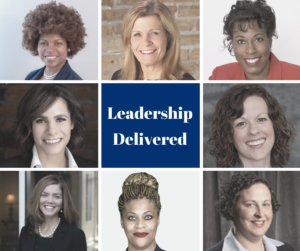Female employees represent a significant portion of the nonprofit sector, but even in this female saturated industry, women have not gained equality in nonprofit leadership. A study done in 2018 by the AAUW (American Association of University Women) shows decisively that the percentage of women in executive roles in nonprofits decreases sharply with the size of the organization as defined by budgets.
The percentage was highest, at just under 60 percent, for nonprofits with budgets smaller than $250,000. For nonprofits with budgets of $1M, only about 50 percent were women, but for nonprofits with budgets of $50M and up, the percentage dropped all the way down to about 10 percent.
At SMA, we have had great success placing women in leadership roles within the associations and nonprofits we serve, with a placement rate of roughly 70 percent.
Finding the right candidate and shattering remaining glass ceilings doesn’t happen by luck, and for progress to be made, it can’t be an abstract concept. It requires an inclusive, proactive sourcing and recruitment plan and, perhaps most importantly, it requires persistence.
Engaging in inclusive sourcing that will result in a slate of interested, qualified candidates for every search requires intentional methods like these:
- Affinity groups: if you can name an occupation or industry and a group of people with a common attribute, it’s likely that there is an organization or association that melds the two so that people who identify as part of the group can advocate for themselves and advance their careers and profession. These affinity organizations usually have job boards where you can post, which is sometimes an effective tactic. Generally, the more specific the group and job board is, the better.
- LinkedIn: in addition to using the affinity group in the LinkedIn search criteria, adding the names of other organizations that may have members who are right for your position can yield multiple strong candidates. If you use LinkedIn Recruiter, try using the “see more people like this” feature when you’ve found a profile you like.

